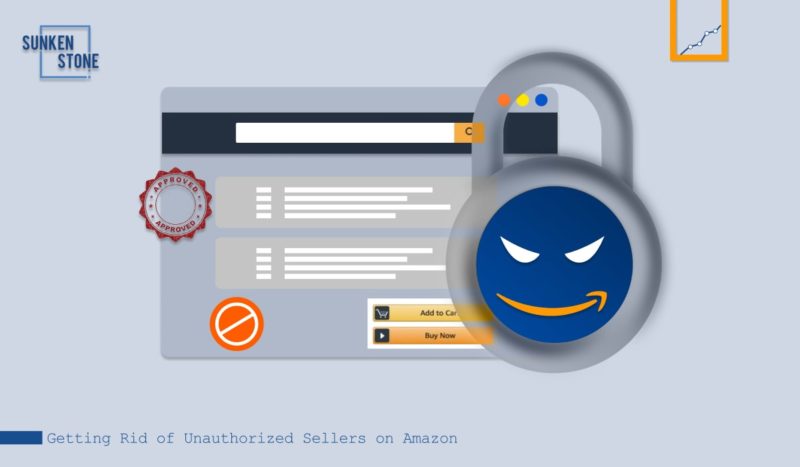In the sprawling marketplace of Amazon, sellers face a persistent challenge: the presence of counterfeit and unauthorized sellers. These rogue entities undermine the integrity of brands, erode customer trust, and threaten legitimate businesses. To combat this threat, sellers must arm themselves with knowledge, tools, and strategies to identify, report, and mitigate the impact of counterfeit and unauthorized sellers. In this extensive guide, we’ll delve into the intricacies of dealing with counterfeit and unauthorized sellers on Amazon, providing detailed explanations, practical strategies, and valuable insights to help sellers protect their brands, uphold their reputation, and safeguard their customers on the world’s largest online marketplace.
Understanding the Threat of Counterfeit and Unauthorized Sellers
Before delving into countermeasures, it’s essential to grasp the scope and significance of the threat posed by counterfeit and unauthorized sellers:
- Counterfeit Products: Counterfeit sellers produce and distribute fake or unauthorized replicas of branded products, often using inferior materials and manufacturing processes. Counterfeits deceive customers and tarnish brand reputation.
- Unauthorized Sellers: Unauthorized sellers acquire products through unauthorized channels, such as liquidation or clearance sales, and resell them on Amazon without the brand owner’s consent. Unauthorized sellers may undercut prices, disrupt distribution channels, and erode brand equity.
- Impact on Sellers: Counterfeit and unauthorized sellers pose numerous challenges for legitimate sellers, including lost sales, damaged reputation, increased customer service inquiries, and potential legal liabilities.
Key Strategies for Dealing with Counterfeit and Unauthorized Sellers
To effectively combat counterfeit and unauthorized sellers on Amazon, consider implementing the following strategies:
- Implement Brand Protection Measures: Register your brand with Amazon’s Brand Registry program to access tools and resources for protecting your intellectual property rights. Enforce trademark protections, including filing trademark infringement complaints and issuing cease and desist notices to counterfeit and unauthorized sellers.
- Monitor Your Listings: Regularly monitor your product listings on Amazon for signs of counterfeit or unauthorized activity, such as unauthorized sellers, listing hijacking, or product tampering. Use Amazon’s Brand Analytics tools and third-party monitoring services to track product performance, pricing trends, and seller activity.
- Enforce Minimum Advertised Price (MAP) Policies: Implement Minimum Advertised Price (MAP) policies to maintain control over pricing and prevent unauthorized sellers from undercutting your prices. Enforce MAP policies through authorized reseller agreements, distribution agreements, and legal recourse for violators.
- Establish Authorized Distribution Channels: Establish authorized distribution channels and partnerships with trusted distributors and retailers to ensure that your products are sold through legitimate channels. Restrict distribution to authorized resellers and enforce contractual agreements to prevent unauthorized sales.
- Educate Customers: Educate customers about the risks of purchasing from counterfeit and unauthorized sellers and encourage them to buy directly from authorized sources or reputable retailers. Provide clear information about authorized sellers and purchasing options on your website and product packaging.
- Leverage Amazon’s Reporting Tools: Use Amazon’s reporting tools, such as the Report Infringement form and the Brand Registry infringement report, to report counterfeit and unauthorized sellers to Amazon. Provide detailed evidence of infringement, including product images, listing URLs, and trademark documentation, to expedite the removal process.
Legal Recourse and Enforcement
In cases where informal measures fail to deter counterfeit and unauthorized sellers, sellers may consider pursuing legal recourse and enforcement actions:
- Cease and Desist Notices: Issue cease and desist notices to counterfeit and unauthorized sellers demanding that they cease infringing activities and remove infringing listings from Amazon. Work with legal counsel to draft and send effective cease and desist letters and follow up with appropriate enforcement measures.
- File Trademark Infringement Lawsuits: If counterfeit and unauthorized sellers persist in infringing activities despite warnings and notices, consider filing trademark infringement lawsuits against them. Seek legal remedies such as injunctive relief, damages, and attorney’s fees to enforce your intellectual property rights.
- Cooperate with Law Enforcement: Collaborate with law enforcement agencies, such as the FBI and the Department of Homeland Security, to investigate and prosecute counterfeit and unauthorized sellers engaged in criminal activities. Provide evidence and assistance to law enforcement authorities to facilitate investigations and prosecutions.
Conclusion
Counterfeit and unauthorized sellers pose significant challenges for legitimate sellers on Amazon, threatening brand integrity, customer trust, and business viability. By implementing proactive strategies for identifying, reporting, and mitigating counterfeit and unauthorized activity, sellers can protect their brands, uphold their reputation, and safeguard their customers on the world’s largest online marketplace. So don’t wait until counterfeit and unauthorized sellers damage your brand and reputation. Start implementing effective measures to combat counterfeit and unauthorized activity on Amazon today and protect your business from harm.
